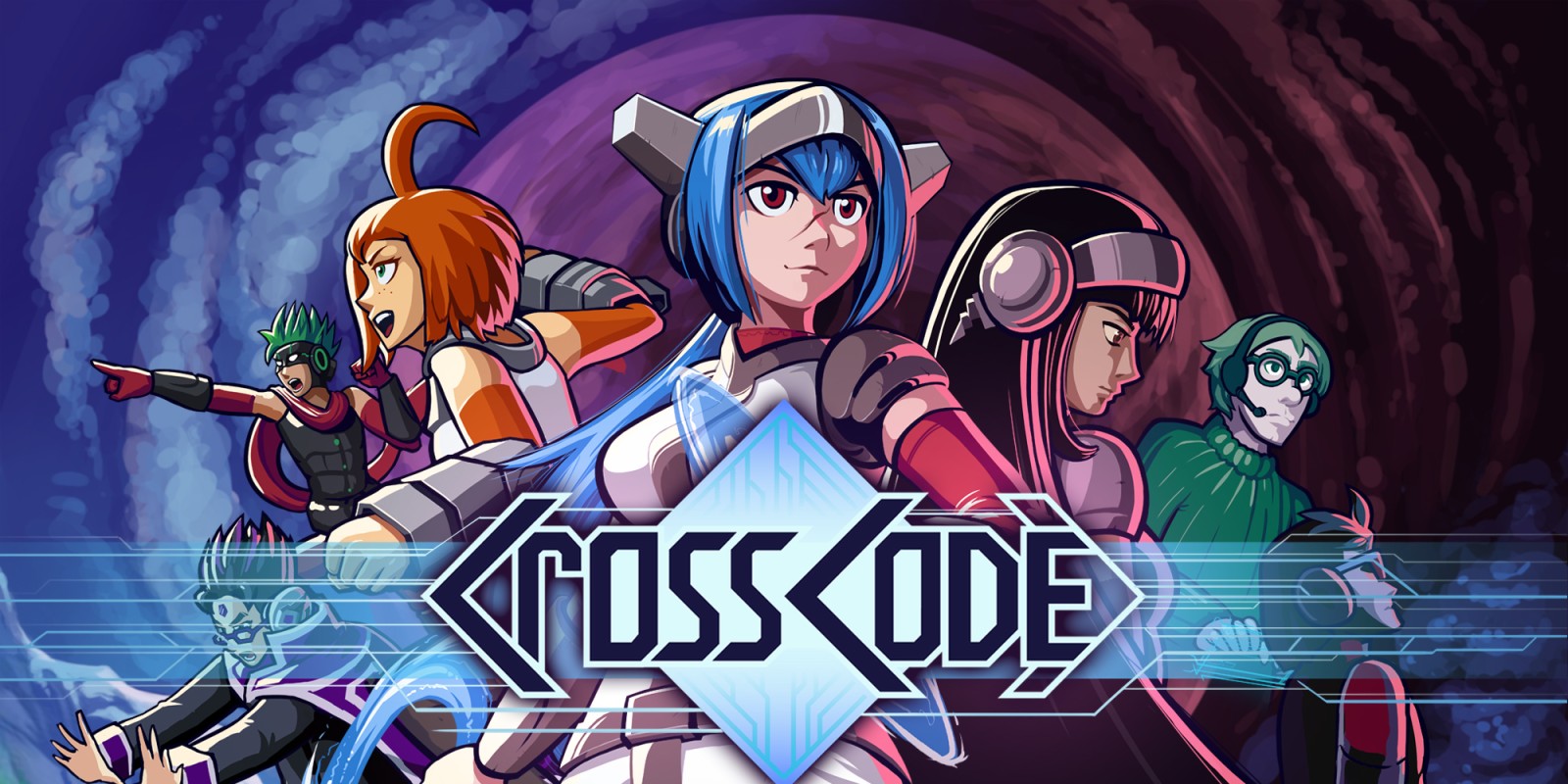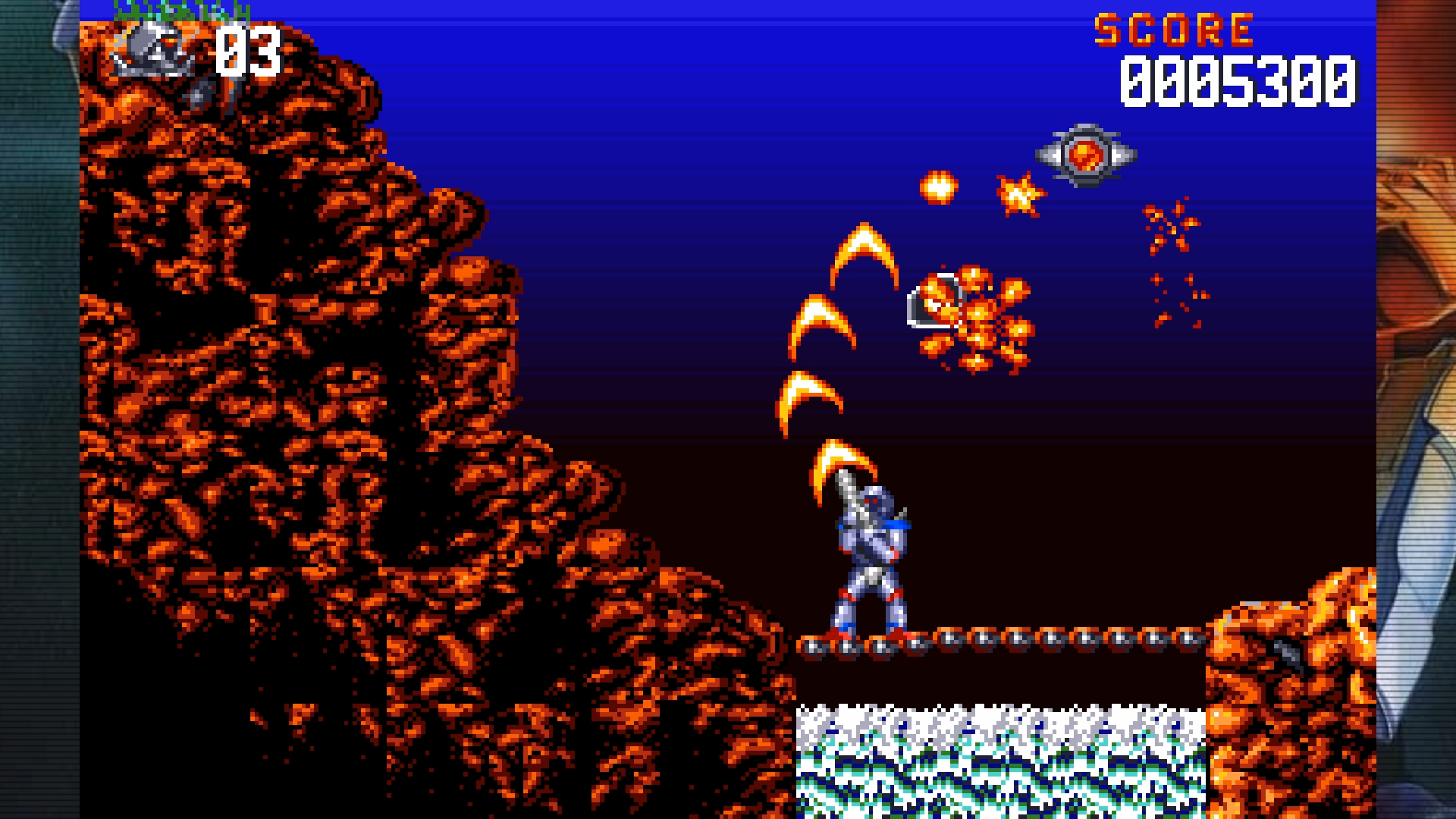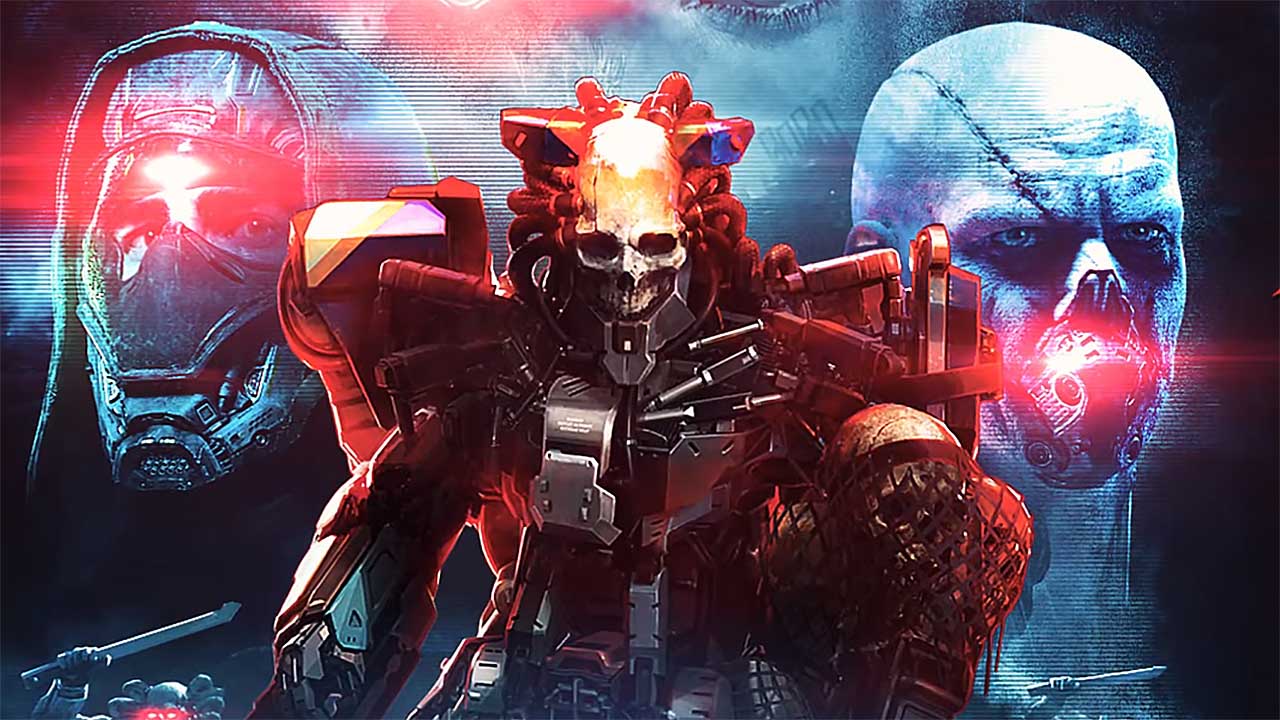Crosscode (PS4) Review – MMO Memories, MMO Problems
A few traditional RPG designers have taken the MMORPG genre and turned it on its head, remaking it as a single-player RPG experience, and relegating the multiplayer part to a fictional construct. By doing this they can explore a more in-depth narrative, their game doesn’t have to be always-online, and they don’t need to develop massive servers to maintain player bases, when generally these are small niche-market games. It’s worked well for the Sword Art Online series of games for some time, although it’s a rare person who will wax about that particular series.
Enter Crosscode, a gorgeous far-future pixelart RPG adventure paying homage to MMORPGs in everything from plot, players and characters to party mechanics, level caps and questing. It’s a game some seven years in the making, with three or so of those in Steam Early Access, getting honed and sorting bugs and progressively adding chapters to the story. Now almost two years since it emerged on Steam in Sept 2018, Crosscode is gracing consoles. Xbox is getting it via Game Pass and PS4 and Switch have digital but also physical boxed editions available from Strictly Limited and InIn Games which can be preordered here https://crosscode.inin.games/
Making the jump from digital-only to physical release says a lot about the popularity of an indie, and doesn’t happen to many. It puts Crosscode in the hallowed space of the likes of Hollow Knight, DeadCells, Moonlighter and Celeste. So we can be sure it’s been popular, but is it any good?

In the far-future, Crossworlds is an MMO, a Massively Multiplayer Online game space, with both players and maintenance staff, but its also a real planet that humanity has colonised. When colonised, it was discovered that the planet was home to a network of ancient temples and technology that had been left by a previous civilisation termed the Ancients ala FF7. Those who called the planet home decided to open it via an MMO-type experience to all human-inhabited planets, in order that the player base would aid them in discovering the secrets of the Ancients. More manpower gets the job done quicker, I guess.
The narrative is set up something like Destiny, but instead of Guardians, you are Seekers. Tens of thousands of players descend on the planet, not in person but as Avatars, human-sized haptic feedback robots that can be remotely controlled via the game interface. Players can log out and their avatar will teleport away, ready to be reused again the next time they login. Players can quest and play together, form parties and join guilds just like in a real MMO, only everyone is a fiction.

Now this is subjective, so if you like MMOs then disregard, but I find there’s something lacking in the concept of everyone trudging the same MMO path of the ancients in a group effort to discover their mysteries. I found the same issue in Destiny. You walk what is essentially a lone road, doing tasks that thousands have done before you and it quickly feels very tourist. Gone is the sense of discovery, that comes from actually being the only one saving the world, or solving a temple no one has seen in millennia. It’s an odd plot choice, because to me it reduces the player impetus from discovery and wonder to a kind of virtual tourism.
I think of it something like a planet-sized theme park RPG where you are being funnelled on-rails through the fun experiences. Within its own premise, Crossworlds seems a monetized tourist trap masquerading as a worthwhile MMO experience. That’s not to say Crosscode is not a worthwhile game experience, far from it, but within its own construct, the game inside the game is strangely empty of worth. If all of that is a bit hard to get your head around, don’t worry, it’s explained in the game a number of times, so you will get it eventually. As I said it’s subjective and many who have grown up on MMO structure will disagree with me.

In Crosscode, you play as Lea, one of the robot avatars being controlled by a player elsewhere, possibly on another planet altogether. The real player of Lea lost her memories during an incident playing the game previously, and a number of real inhabitants want to help you recover them by playing through again. They suspect it is all wrapped up with the ancients and may serve as the key they need to discover more. That’s the premise; play the game you’ve already played, which caused you to fall into a coma and lose your memories, again. Sounds safe.
Lea is a traditional silent protagonist, but it’s almost as if Crosscode didn’t quite want a silent protagonist at the same time. The plot tries to explain her lack of speech as both her memory loss, and as a glitch in the game code, and your handler periodically gives you access to a few words Lea can use. Five hours in I could say Hi, Bye and Lea, so don’t expect much.
You may only have a few words, but other characters will fill the void. Crosscode has a wonderful dialogue log, just under the system button so that you can always check back through the conversation whenever you want. Every RPG player has got trigger happy in dense text box sections on old games and thought, you know what’s really annoying, missing some dialogue and not being able to look back. Probably a result of this spending time in early access, and it’s a welcome addition.

Crosscode uses an art style similar to classics like Zelda and Pokemon, but the quality is much more akin to 32bit, like Alundra. The pixelart is lush and pretty throughout, and animations especially in combat are really quick and smooth. Every outside area is vibrant and colourful and every dungeon will oppress with its darkness in comparison. But it’s meant to. After the first huge sprawling ice temple, the feeling of suddenly emerging in the outside world again was tangible. Oh, there’s the sun, I missed you.
With all its virtual reality, MMOs and teleporting, Crosscode feels far closer in tone to the science fiction greats of the pixel era, like Xenogears and the first two Star Ocean games. There is plenty of quaint fantasy, but technology is the overriding aesthetic. There’s also a lot of commentary on the traits and quirks of MMO gaming so buckle up for essentially absurd plot elements like missing doing quests together, or other players not being able to join you because of their level.

Moving around the world involves a parkour free-running style like the early Assassin’s Creed games. Push in the direction you want to go and the game will do the jumping for you. Sure it’s a little hands-off, but you still have to aim and you can still fall. This parkour is used to great effect, in that every town becomes a maze of rooftop jumps and secret areas, just like every dungeon combines this with myriad ricocheting ball and block puzzles. I spent more time in even just basic towns in Crosscode than I usually would, simply because I knew they were full of jumps and secrets to find, that often involved long stretches and multiple screens.
Towns are full of quest-givers who are often part of guilds, who will dispense a hundred item-collecting fetch-quests which can be rather dull, but they are nicely organised in that you can collect every quest, then complete most of them in the next place you visit, which is handy design. The trouble is that after you’ve done a bunch from the first few towns, it all gets a bit samey very fast.

In another MMO trope, you will loot thousands of items from enemies as you play, but usually these are items of little worth. Base level things like fur and teeth and horns. These can be bartered for better items that just maybe can be bartered into items you actually need. Gathering happens automatically with little player impetus, and it’s a nice touch that the shops tell you what they can make just as a popup as you walk by, but overall it seems an inflated item system that I rarely if ever engaged with beyond a few key items when I hit a level block.
Like its MMO inspirations, Crosscode requires a lot of grinding for levels. The first time you are really given free rein to explore in Autumn Rise, there are some ten screens or so of outdoor areas to explore, but when I reached the next town all the new quest level requirements had shot to level 17. I had done every quest on the way, been back and forth multiple times and up the side of a mountain, and was only at level 12. Clearly, much grinding is needed, my friend.
There is no overworld map to traverse, every locale is at the same size differential, but there is a map function and fast travel options. For the most part this is really fast and loads the next area in seconds, but I never found the map function to be an intuitive button choice. The menu is under the touch pad, and the system button is more of a pause. The world map instead hides under the item and party wheel that you bring up during combat, and this never felt right.

One of the first things you do in Crosscode is virtual reality combat training. You know Kung fu? Show me. This is even before you are told anything about being stuck in an MMO. It’s a good thing too, because combat is a full hand of great mechanics, and I was enthralled enough by the combat in the early stages to forgive the lack of exposition and plot in the rest of the game.
The combat is uniquely its own thing as you will gather from the next few paragraphs. Crosscode has a wonderful tutorial that introduces all its systems to you at something close to a perfect pace and difficulty, and is never overwhelming. Concentrate on the combat first, before we give you access to menus and items and normal RPG fare.
Simply put its L1 to dodge and block and R1 to slash and combo. The closest thing is a series I hadn’t even tried until recently, Ys, but it’s also heavily influenced by the likes of Zelda and Alundra again. You wield two Chakrams, circular blades with only one safe place to hold them, and you can slash and whirl through enemies with these to your heart’s content. With melee combat, I did notice a tendency for my attacks to pass through enemies and not connect, which can be a serious problem in the really tough bosses and later sections.
Add to this, Virtual Ricochet Projectiles or VRPs. These are gravity-defying balls that you can throw at enemies and they control like a twin-stick shooter. What’s cool but makes no sense, is that the enemies are virtual too, just like your VRPs, and your blades – so others can only see them through AR goggles. Which is fine until the natives ask you to deal with enemies destroying their sacred trees. But they’re virtual? Either that or they are real, in which case why do my virtual weapons hurt them? Maybe it’s a hard light situation like Rimmer from Red Dwarf.

Leaving aside that strange inconsistency, enemies are also well-designed from a combat perspective, but not that interesting in terms of their look. They will turn red as they are about to attack, giving you a moment to pummel them and cancel their attacks. Enemies often require different tactics to defeat making them more interesting to fight; some are weaker to the projectiles, others to your Chakrams; some like the bulls, block attacks from the front; still others later in the game require you to change your element, or knock bubbles out of the air before you can even damage them.
There’s also a neat style gauge, where moving from fight to fight, without a break in-between, is rewarded by a higher rank, and better rare loot drop rates. If you let even five seconds or so go by without engaging again, the rank drops back down to nothing, but in that downtime you also auto-heal to full, so it can be a fun balancing act as to whether you’re skilled enough to risk longer fights.
The VRP balls are employed extensively outside of combat throughout the dungeons and puzzles of Crosscode, and often combined with a number of other classic puzzle styles like ice-block, melting blocks etc. It’s not much different from the usual fare you’d find in classic Zelda, but its welcome and fresh here.
Music is generally good, and pleasant throughout, however I’d have trouble picking a standout track. At the same time there aren’t any that actively annoy, which is a plus. I would say the music did its job, but certainly did not make any lasting impression.

It’s a shame that what starts with good fun dialogue and an interesting premise, devolves into barely any plot within just a few hours. Don’t get me wrong, characters tell you where to go and what to do, and there is a four element temple/dungeon powers structure to the game ala Zelda, but that’s not half what was promised at the start. It employs a number of hackneyed RPG tropes to full annoying affect; the amnesiac protagonist just trying to recover their lost memories; the search for four elements in their respective temples; an obnoxious badly written anime rival, who constantly pursues you and challenges you to duels throughout the game. We’ve seen it all before. There’s a bit more plot than your average Zelda, but there’s nothing in comparison to your average Final Fantasy.
It’s a shame that there is little in the way of interesting politics, intrigue or subtext. No one is really trying to overcome any character flaws, nor does anyone except silent Lea have much of an arc. A villain is introduced at the beginning and tries to kill you, but *minor spoiler* it was the end of Chapter six out of a ten chapter game before I saw him again. * Spoilers end* It’s around this same point that the plot actually begins to be remotely interesting, and by that point, I had lost interest. Half a game and more of just collecting elements and completing massive puzzle-filled temples, left me scratching my head looking for the conflict in the story or a reason to continue.

Massively Multiplayer Games suffer from a number of faults that subjectively make them the opposite of what I want to play. Crosscode includes these when other design choices would have suited better. Massive item management, a gaping hole where a plot should be but only quests remain, that disjointed sense that I’m repeating a quest that is not my own – these are tropes of MMOs that are the reason I avoid them. Crosscode’s real issue is it homages the genre a little too closely, gaining padding and losing some of what makes single-player RPGs so much better.
Crosscode’s MMO stylings may enamour it with the modern gaming market, the younger generation for whom constant questing actually forms what they expect of a gratifying narrative, but for the more seasoned gamer it can come off as having done away with all the best parts of traditional RPGs in favour of a hollow collection of fetch quests.

For an indie pixelart RPG, there’s a lot going on, and Crosscode is polished, ambitious and charming. Combat is a treat, although it can get very challenging with the tactical demands of some enemy types. The puzzles are up there with the classics of the genre, but there are so many of them that the temples can become a marathon slog, only to find an unbeatable boss that’s so hard it’s no longer fun. Better teleport out and level up.
And in that, it is a lot like the classics it homages. Alundra had me cursing my inability to complete bosses and puzzles at a similar rate as Crosscode. There is a lot to love in this indie RPG, with a wonderful level of detail. It’s just a shame that it has only the bare bones of a plot, and some MMO tropes that should have been cut.
7/10
CrossCode is available on PC and is launch on PS4, Xbox One and Nintendo Switch on the 9th of July, 2020.
Developer: Radical Fish Games / Deck13
Publisher: Deck13 (digital) / Strictly Limited Games & InIn Games (physical – purchased here)
Disclaimer: In order to complete this review, we were provided with a promotional copy of the game. For our full review policy, please go here.
Make sure to follow Finger Guns on our social channels –Twitter, Facebook, Twitch, Spotify or Apple Podcasts – to keep up to date on our news, reviews and features.



